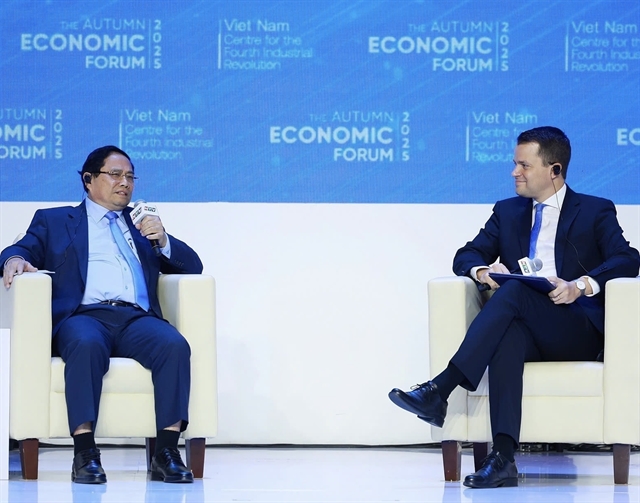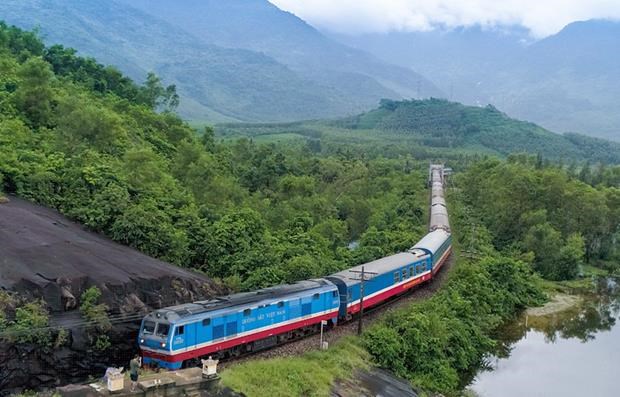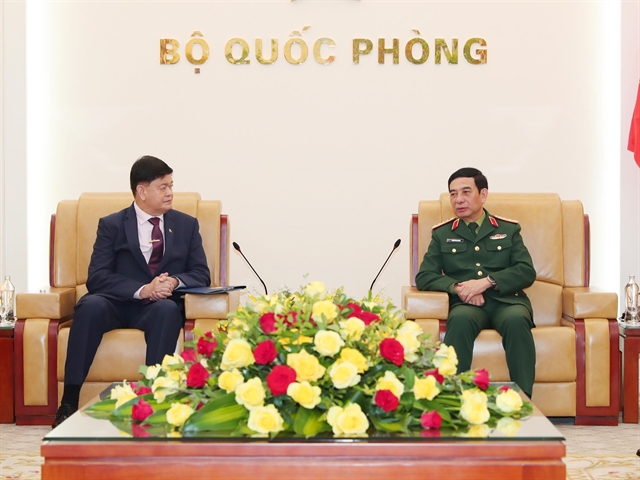 Economy
Economy


|
| A train on the North-South railway. Việt Nam will need an estimated VNĐ240 trillion up to 2030 to fund railway projects until 2030. — VNA/VNS Photo |
HÀ NỘI — Detailed policies on attracting investment in the railway industry are needed to meet the country’s ambitious VNĐ240 trillion (US$10.5 billion) railway development plan in the next ten years, experts said.
Prime Minister Phạm Minh Chính recently signed a decision to approve the country’s railway development plan for the 2021-30 period, which sets the goal of building nine new railways with a total length of 2,362km by 2030.
The longest is a 1,545km long high speed rail line running north-south from Ngọc Hồi Station in Hà Nội to Thủ Thiêm Station in HCM City, with priority of investment being given to the Hà Nội-Vinh and Nha Trang-HCM City sections.
The Yên Viên - Phả Lại - Hạ Long - Cái Lân line will run 129km while the Ngọc Hồi - Lạc Đạo - Bắc Hồng will be 59km long.
The 102km long Hà Nội - Hải Phòng line, part of the Lào Cai - Hà Nội - Hải Phòng line, will run in parallel to the Hà Nội - Hải Phòng Expressway and connect with the port of Hải Phòng.
In the central region, a 103km line will run from Vũng Áng Port to Mụ Giạ Pass on the Việt Nam-Laos border.
The Biên Hòa - Vũng Tàu line runs 84km from Trảng Bom to Vũng Tàu stations.
There will also be two other lines linking HCM City with Cần Thơ and Lộc Ninh, with respective lengths of 174km and 128km.
The Thủ Thiêm - Long Thành line will link Long Thành International Airport with Thủ Thiêm Station and only serve passengers.
Việt Nam will need an estimated VNĐ240 trillion to fund the projects.
In order to achieve planning goals, Government will continue to provide incentives for organisations and individuals to invest in the railway transportation business, including the use of land funds to develop the national network. It will further mobilise domestic and foreign resources to invest in transportation by ensuring a fair and healthy competitive environment for all economic components in this field.
According to Nguyễn Danh Huy, Director of the Ministry of Transport’s Planning and Investment Department, with such a large capital need, the State’s budget will play the leading role, accounting for 80 per cent of the total investment. The remaining capital will come from the public–private partnership (PPP) investment model.
Vũ Anh Minh, Chairman of the Members' Council of the Vietnam Railways Corporation (VNR) said it is necessary to clearly identify the capital sources to enable to success in calling for private and official development assistance (ODA) investment.
Director of the Vietnam Railway Authority Vũ Quang Khôi said some new railway lines connecting to seaports have received more attention from investors because they have clearly defined the form of PPP investment model.
For example, the railway project from Vũng Áng Port to Mụ Giạ Pass at the Việt Nam-Laos border has a total investment of more than $5 billion, in which investment capital of Việt Nam is nearly $1.6 billion under the PPP model. The consortium of Petroleum Trading Lao Public Company (PetroTrade) and Việt Nam's HT Investment Construction Management Co has so far completed reseaches and submitted the project’s pre-feasibility study report to relevant authorities. — VNS




